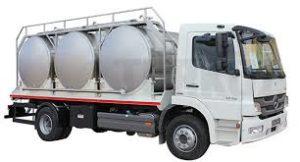Milk Transportation Services and their Importance
Table of Contents
How Did Milk Transport Services Begin?
Milk transport services today are used to transfer raw milk to milk processing facilities that help individuals receive their milk today. Trucks that are utilized are either full milk tank trucks or trailer units to go to processing facilities. Moreover, around the early 1900s, farmers would have to drive their milk to a processing facility and other farming products distributed to other processing facilities. In the 1960s, milk transfer services were known as milk hauliers. They began to take over transporting milk when tank trailers were beginning to be used more often because it was deemed a more sanitary method to transfer raw milk across the country by processing milk factories. Lastly, after the 1970s, most milk distribution companies could not afford to maintain fleets, so now hauliers are contracted out to drivers rather than companies running designed fleets.

What Are Hauling Routes, And How Did They Begin?
A specific number of farms determines a hauling route to pick up raw milk on the way to the processing facility. Furthermore, today in certain areas, the routes are not designated to a specific driver, but in other places in the countries, specific routes are designated to specific drivers. Milk producers are the ones who sign a contract or deal with a specific driver or company that hires a driver to pick up their milk. Moreover, routes may change due to the supply and demand of milk. If the demand is higher, milk processing plants near major cities will be warranted to take more milk in. If the demand is lower, milk hauliers can be sent to other facilities to balance the areas that are low on milk production. Knowing this, it can be said that milk hauling services can be altered at almost any time. Lastly, it is very important to understand how milk routes have changed and altered over time, making it easier for consumers to have as many dairy products as they desire.
What Duties Does a Milk Transporter Have?
A milk transporter or milk haulier has a good amount of duties that show why they are paid a good price for their services. Furthermore, milk hauliers had to lift 10-gallon milk barrels in the past, but now, with technological advancement, a milk haulier is no longer the driver, tester, sampler, and dispatcher. Moreover, milk hauliers have to do multiple jobs since the physical load of transporting milk has vastly fallen off with technology. A milk transporter’s fort task when picking up milk must ensure the milk tank is at the proper temperature, so the milk does not spoil. After, they record how much milk is in the tank once milk is done filling up a tank, and after a sample is taken after 5 minutes of filling has gone by. Next, after the milk and sample are delivered to a milk factory, the driver will have to hose down the milk tank while the farmer will have to clean the tank following specific guidelines. Lastly, this completes the main duties that a milk haulier must follow whenever they have the product to pick up.
How Are Rates Determined?
Rates are determined by different factors that would make you or others in need of milk distribution services decide the best option. Besides the transportation services rate, a driver’s reputation and connections in the industry can alter the rate amount each haulier charges. Moreover, performance is also another important factor when choosing the right milk haulier. It is not uncommon for multiple milk hauliers to be called to find the lowest or best price for the services that will be needed. Rates are also chosen by different parties negotiating the price of routes using the amount of milk being transferred, mileage, how many stops will be made, and the location of the farm. All of these factors go into deciding the cost of routes. Moreover, this is an important factor for you and or other individuals who need milk to be transported. So, now after having learned about milk distribution and how it works, go and find out the best rates that support your needs with information backing your negotiating power.

